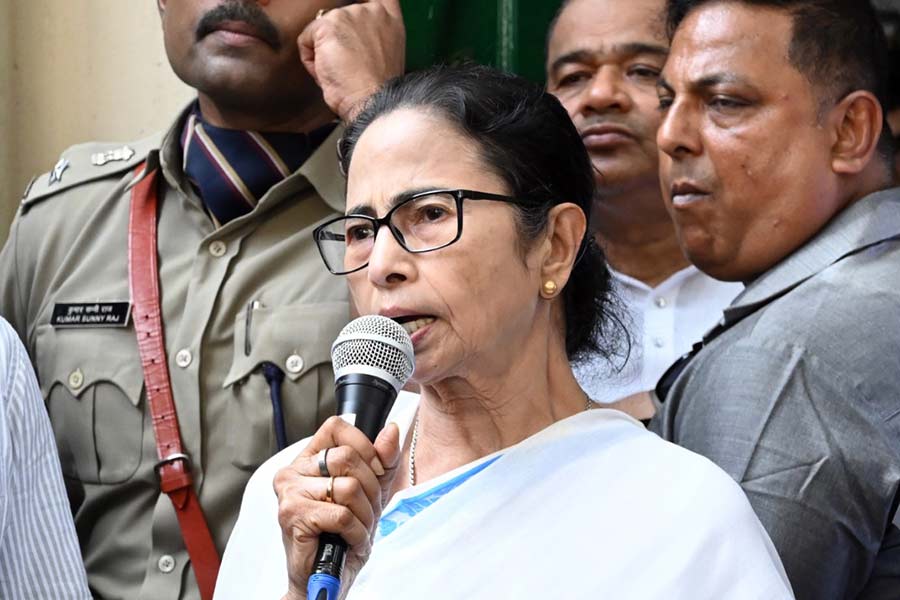 |
| SHORT LIVED? The young are being stalked by serious ailments |
Nutrition specialist Shobha Rao has just joined the league of doctors in India who’re haplessly watching medical aberrations turning into reality. Rao, the head of the nutrition division at the government-funded Agharkar Research Institute in Pune, was investigating obesity levels among school children when she stumbled upon children as young as nine years old displaying early, ominous signs of high blood pressure.
In a large study to record body weight and blood pressure among adolescents, Rao and her colleagues examined over 2,000 boys and girls from affluent families and found that two out of 10 children between nine and 16 years of age had early signs of high blood pressure.
“It’s really alarming —these children are still in school. Imagine what will happen as they move into adulthood without corrective action,” Rao says. High blood pressure is a major risk factor for both heart attacks and strokes. The Agharkar team found that 12 per cent of boys and nine per cent of girls examined had blood pressure readings beyond the normal for their age. Rao says the findings, which appear this month in the European Journal of Clinical Nutrition, are significant enough to justify routine blood pressure measurements of school children.
 |
Doctors have known for decades that Indians tend to get heart attacks about five to 10 years earlier than Caucasians from Europe or North America. Now India’s medical community is picking up portents of a downward slide in the age of onset of bone loss, high blood pressure, and diabetes as well as related complications such as stroke and cataract — conditions precipitated by lifestyle and food habits.
In his clinic in south Delhi, diabetes specialist Anoop Misra has seen teenagers — including many who are yet to even step into college — coming to terms with diabetes. Not juvenile diabetes that can strike young children, but type-2 diabetes that’s typically seen only in middle-age. “The change has been very fast and very dramatic,” says Misra, head of diabetes at the Fortis Hospital in New Delhi. In a short span of just nine months, Misra and his colleagues in the capital have found 52 patients between the ages of 14 and 25 years with diabetes. “Ten years ago, we wouldn’t have found a single person in this age group with type-2 diabetes in such a short time,” Misra says.
 |
While medical researchers have suspected for decades that certain genes are involved in obesity and diabetes, they are convinced the trend currently being observed has more to do with changes in food and living habits than with any genes. “Our genes are exactly the same that they were a few decades ago — what has changed is what we eat and the way we live,” Misra said.
His studies indicate that the proportion of overweight children in New Delhi climbed from 18 per cent in 2004 to 28 per cent in 2006. And a number of independent medical studies from across India have shown that the prevalence of obesity and insulin resistance — a precursor to diabetes — is about 20 to 30 per cent among the general population above the age of 12 years.
“Lack of exercise and excess high calorie food lead to obesity which contributes to insulin resistance,” says Vijay Vishwanathan, the director of the Diabetes Research Centre in Chennai. Doctors warn that early diabetes may translate into early onset of the myriad complications of the disease — from heart disease to kidney failure, from damage to the retina to erectile dysfunction.
Cataract is one of the possible complications of diabetes. While there are no surveys, anecdotal accounts by ophthalmologists suggest that the proportion of presenile cataract — a condition that shows up before the 40s — appears to be increasing.
“Presenile cataract is usually a consequence of trauma, diabetes or the use of steroids for certain chronic conditions such as asthma,” says Aarti Nangia, a senior consultant ophthalmologist at the Max Hospital in Noida, who’s among doctors who’ve seen cataract patients in their early 40s.
The growing number of anecdotal accounts of what were conventionally viewed as middle-age diseases observed increasingly among young adults — even adolescents — while worrying, do not surprise most doctors tracking the trends. “We’ve got fast food joints on every street corner now — even in small towns, and there’s no enthusiasm for physical training any more — even in schools,” said Rao at Pune’s Agharkar Research Institute. “All children now want are ranks. I think that it’s time our schools introduced marks for physical training and made it compulsory,” she says.
Many doctors believe the only way India can prevent the epidemic of such non-communicable diseases is through corrective action initiated in schools. By the time they’re ready for college, it could be too late, says Misra, who is among a team of doctors who’ve launched a health education programme in northern India to coax children, parents, and teachers about the virtues of healthy eating and regular exercise.
Doctors estimate that the number of patients in India with type-2 diabetes could be anywhere from 20 million to 40 million. But not all of this diabetes stems from a sedentary lifestyle and junk food. While some young Indians are indeed paying the price of eating too much, others may be victims of undernutrition while they were still in the wombs of their mothers.
Palany Raghupathy, former professor of paediatrics at the Christian Medical College, Vellore, is among doctors who’ve shown that low birth weight can lead to diabetes in adult life — a connection first suggested by David Barker, a British doctor, in the early 1990s.
Babies born with a low birthweight have a limited capacity to process food. So when parents — with encouragement from doctors — overfeed such babies, their organs can’t cope with excess food. “It’s like trying to turn a Maruti-800 into a Scorpio,” says Raghupathy.
“The capacity of pancreatic cells is determined during foetal life. Low birth weight babies should not be overfed but allowed to grow in their own normal track,” he says. “They’ll have a slightly lower weight than others, but if their growth curve is parallel to the others, we know things are okay.”
A new study by Raghupathy and his colleagues set to appear in August in the journal Diabetes Research and Clinical Practice has found that three per cent of people between the ages of 26 and 32 years in urban and rural areas of Tamil Nadu had glucose intolerance — a potential pre-diabetic condition.
While complications of diabetes and high blood pressure are likely to hound young Indians in the years to come, several studies suggest that their bones are already threatened by a condition called osteomalacia — weak bones susceptible to fractures. The studies have shown that the prevalence of osteomalacia is higher in India than in the West.
Studies from Delhi, Mumbai, Lucknow, Tirupati and Varanasi have shown that the bones of Indians are compromised early in life because of lack of vitamin D and calcium deficiency. Vitamin D is needed for healthy bones, but it can be absorbed by the body only when there are sufficient levels of calcium. “Eight out of 10 people covered in these studies had vitamin D deficiency,” says Ambrish Mithal, a consultant endocrinologist at the Apollo Hospital in New Delhi, and president of the Osteoporosis Foundation of India.
One study of 900 urban and 200 rural adults released in April this year by doctors at the Sri Venkateswara University in Tirupati showed that six out of 10 men, and seven out of 10 women, had a deficiency of vitamin D. In both urban and rural areas, daily calcium intake was lower than what is recommended by the Indian Council of Medical Research. “In the absence of fortified food, the sun may serve as a good source of vitamin D, but Indians generally tend to shun the sun,” Mithal said. But a diet that is rich in vitamin D and containing appropriate levels of calcium but adopted early in life may help prevent long-term damage, he says.
The faster such messages are heeded, the better it is — for individuals and for the nation. While the growing number of people in their 30s or 40s with chronic illnesses will affect patients and their families, the nation will also have to pay in terms of a loss in national productivity and rising health care costs. “The economic cost will be enormous,” says Misra.











